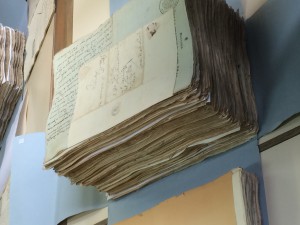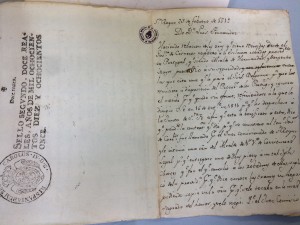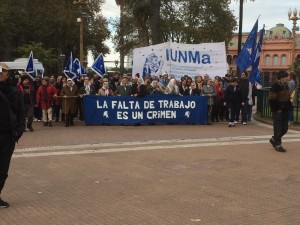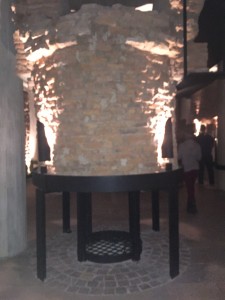In the United States I never knew that we had access to almost any document we could dream of, which is also what is available here. The first thing that struck me about the building was it’s intricate yet simple architecture visible in the inside of the building. Its size was also incredibly impressive, but what was more interesting was how much information the building held. We were fortunate enough to get a tour of a few sections of the archives where we tested out the audio/visual database and learned about the restoration process o f the older documents. I think touring this building and getting to see a few of the older documents gave me a better appreciation for the work of historians, since before today I did not know the logistics of the job. Additionally, the fact that centuries of records could fit in a few of the boxes that we were shown was humb
f the older documents. I think touring this building and getting to see a few of the older documents gave me a better appreciation for the work of historians, since before today I did not know the logistics of the job. Additionally, the fact that centuries of records could fit in a few of the boxes that we were shown was humb ling and made me reflect on how little time I have been a part of history. Overall, this excursion was educational in showing us some behind-the-scenes aspects of being a historian and how the documents we see online in databases got there.
ling and made me reflect on how little time I have been a part of history. Overall, this excursion was educational in showing us some behind-the-scenes aspects of being a historian and how the documents we see online in databases got there.
We also got the chance to tour the Plaza de Mayo where we saw Las Madres de la Plaza along with other groups protesting. Los desaparecidos are the people who disappeared during the last, and most bloody, dictatorship in Argentina under Jorge Rafael Videlo due to their political alignments. Las Madres have been protesting these disappearances for 39 ye ars, every Thursday in La Plaza de Mayo in order to raise awareness about those who have disappeared, but also with hopes to bring justice to the families of los desaparecidos. There are still families that have not received closure with regards to the family members they lost, and more people
ars, every Thursday in La Plaza de Mayo in order to raise awareness about those who have disappeared, but also with hopes to bring justice to the families of los desaparecidos. There are still families that have not received closure with regards to the family members they lost, and more people still need to be brought to justice for their crimes against these families.
still need to be brought to justice for their crimes against these families.
La Plaza de Mayo is an important historical place for many reasons, but these marches of resistance held by Las Madres resonates with me the most. These brave women dared to speak out against the government during the “dirty war” under Videlo even though the chance of being killed or becoming another desaparacido was very high. The passion that the women (and men now) show for their families and justice was and is inspiring to witness. I can only hope that I would show the same bravery and devotion to my family and values as they have, however I also hope I never need to.

